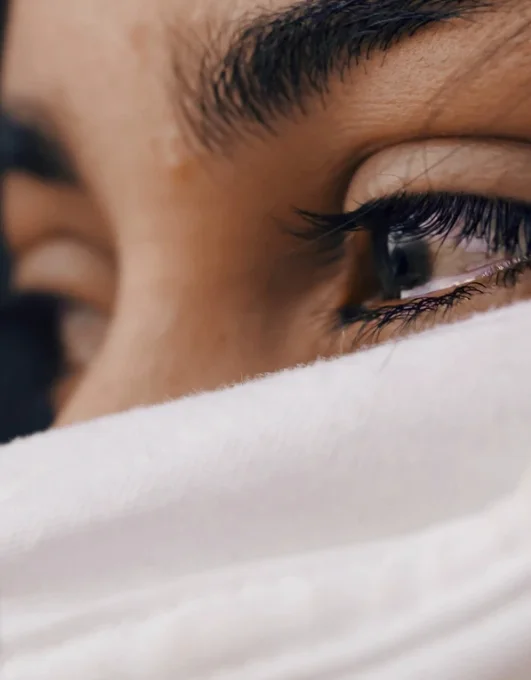Blocked Tear Duct
Your body creates tears in the lacrimal glands in your upper eyelids. The tears flow into your eyes through tiny tear ducts and help to keep your eyes free from things that could irritate them, like dust. Even if you're asleep, your body is still producing tears.
These tears drain from the eye through the upper and lower puncta, leading into the canaliculi into the lacrimal sac. They finally lead into the nasolacrimal duct, which drains into the nose and down the throat.
Sometimes the nasolacrimal duct can become blocked, which will result in a lot of excess tearing.
What Causes The Blockage?
There are many causes of blocked tear duct but most of the time it is just bad luck. The main causes include:
- Trauma, Such As A Broken Nose.
- Chronic Sinusitis.
- Congenital Conditions.
- Nose Polyps.

Treatment Options For A Blocked Tear Duct
When we first see a patient in consultation, we need to ensure that they indeed have a blocked tear duct. We have many options available to help us diagnose the root of the tearing:
- Eyelid Examination.
- Tear Duct Probing & Irrigation.
- Endonasal Scope.
- Dacryocystogram (DCG) - This Is An X-ray Of The Tear Duct With The Aid Of A Contrast Dye.
Once we identify a blockage, we can proceed with surgery to correct the issue. This surgery is called a dacryocystorhinostomy (DCR). Not everyone will have surgery, especially if the symptoms are not that bothersome.
Sometimes the blockage can cause infections called dacryocystitis. These can be very painful and require a course of antibiotics and a prompt surgery booking.
The Dacryocystorhinostomy Surgery
For the dacryocystorhinostomy (DCR), we are bypassing the blockages in the nasolacrimal duct. An incision is made on the side of the nose, around where glasses would sit. The lacrimal sac is located, and a new channel is made from the sac into the nasal cavity. We will place temporary tubes in this new channel for three to four weeks during surgery while it is healing.
The surgery takes about 25 minutes per side.
We can administer a general anesthetic or a local anesthetic with intravenous (IV) sedation. Local anesthetic with IV sedation has significant advantages, including less bleeding and quicker recovery times. With the IV sedation, you will be aware of things happening but will be comfortable. You may not remember the surgery very well afterwards. With a general anesthetic, you will be unconscious throughout the procedure. General anesthesia does carry some higher risks and slower recovery time.
Most patients will go home on the same day as surgery. The success rate with surgery is about 95%.
DCR surgery may also be performed endoscopically through the nose. The advantage of this approach is no skin incision. The disadvantage is a general anesthetic is usually needed, and we leave the temporary tubes in longer. (Approximately three months vs. three weeks)
This approach does come with a slightly lower success rate of about 90%. For more information, contact our office.